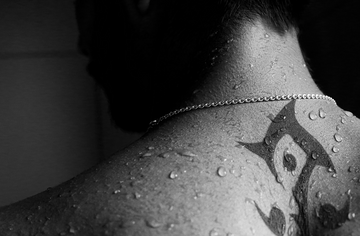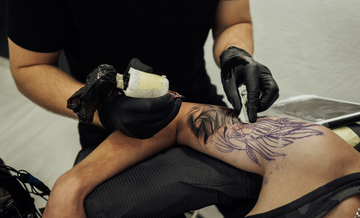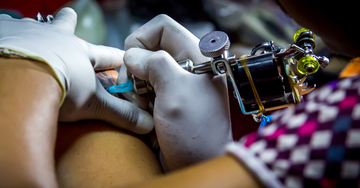Tattooing involves piercing the skin repeatedly with needles to embed ink, which can be uncomfortable or even painful depending on the individual’s pain tolerance and the tattoo’s location. For those concerned about enduring the pain, tattoo numbing sprays offer a convenient solution. However, improper use or lack of knowledge can lead to complications. This checklist will help you make an informed decision and prepare for a smooth tattooing experience.
What Is Tattoo Numbing Spray?
Composition and How It Works
Tattoo numbing spray is a topical anesthetic designed to temporarily reduce pain by numbing the area where it is applied. It typically works by blocking nerve signals in the skin, preventing the transmission of pain signals to the brain.
Common Active Ingredients
- Lidocaine: A widely used anesthetic that temporarily numbs the skin.
- Benzocaine: Another anesthetic that works on the skin’s surface.
- Epinephrine: Often included to reduce swelling and prolong the numbing effect.
Benefits of Using Tattoo Numbing Spray
- Pain Relief: Numbing spray makes the tattooing process more tolerable, especially for areas with thin or sensitive skin.
- Longer Sessions: Reduced discomfort can allow for longer tattoo sessions without frequent breaks.
- Improved Focus: A pain-free experience helps clients stay still, enabling the tattoo artist to work more efficiently.
Potential Risks and Side Effects
While numbing sprays can be helpful, they aren’t without risks:
1. Allergic Reactions
Some people may experience redness, itching, or swelling due to an allergic reaction to the spray’s ingredients.
2. Skin Sensitivity
Overuse or misuse can lead to excessive numbing, which may temporarily alter the texture of the skin, making it difficult for the tattoo artist to work.
3. Delayed Healing
Certain numbing sprays may interfere with the skin’s natural healing process, increasing the risk of complications post-tattoo.
Legal and Professional Considerations
Is Numbing Spray Allowed in All Tattoo Studios?
Not all tattoo artists or studios permit the use of numbing sprays. Some artists believe it can alter the skin’s behavior during tattooing, making it harder to achieve precise details. Always consult your tattoo artist beforehand.
Artists’ Perspectives on Numbing Sprays
While many artists are open to their use, others feel it compromises the integrity of the skin or the tattooing process. Communication is key to understanding what works best for both parties.
The Ultimate Checklist
To ensure a safe and effective experience, follow these steps:
Step 1: Research the Product
- Choose a reputable brand with positive reviews and certifications.
- Check the concentration of active ingredients like lidocaine—typically 4-5% is safe for tattoos.
- Avoid unregulated or suspicious products.
Step 2: Consult Your Tattoo Artist
- Inform your artist about your plan to use numbing spray.
- Some artists may prefer specific products or have alternative recommendations.
- Discuss timing to ensure proper application aligns with the session.
Step 3: Check Your Skin’s Compatibility
- Perform a patch test 24 hours before your appointment to rule out allergic reactions.
- Apply a small amount to a less sensitive area and monitor for redness, swelling, or irritation.
Step 4: Follow Proper Application Guidelines
- Clean the tattoo area thoroughly before applying the spray.
- Apply the numbing spray 30-45 minutes before the session, as per the product’s instructions.
- Cover the area with plastic wrap (if advised) to enhance absorption.
Step 5: Know What to Avoid
- Don’t use numbing spray on broken or irritated skin.
- Avoid applying excessive amounts, as this can lead to over-numbing and complications.
- Never mix multiple numbing products without professional guidance.
Myths and Misconceptions
“Numbing Sprays Eliminate All Pain”
While they significantly reduce discomfort, numbing sprays don’t make you completely pain-free. Expect some level of sensation, especially during long sessions.
“All Numbing Sprays Are the Same”
Not all sprays are created equal. Products vary in strength, formulation, and effectiveness, so choose one designed specifically for tattoos.
Tattoo numbing sprays can be a game-changer for clients anxious about pain. However, their effectiveness and safety depend on proper research, consultation, and application. By following this checklist, you can ensure a smoother, more comfortable tattooing experience without compromising the quality of your tattoo.
FAQs
1. How Long Does Numbing Spray Last?
Most sprays provide relief for 1-2 hours, depending on the product and individual factors.
2. Can Numbing Spray Affect Tattoo Ink Quality?
Some artists believe excessive use can alter the skin’s texture, potentially affecting ink absorption. Always use as directed.
3. Is Numbing Spray Safe for Sensitive Skin?
Yes, but it’s crucial to perform a patch test beforehand to rule out allergic reactions.
4. Can Numbing Spray Be Used for Touch-Up Sessions?
Absolutely. Many people use numbing sprays for smaller, more painful areas during touch-ups.
5. What Are Alternatives to Numbing Spray?
If sprays aren’t suitable, numbing creams or gels can be used as alternatives, but consult your artist before application.





